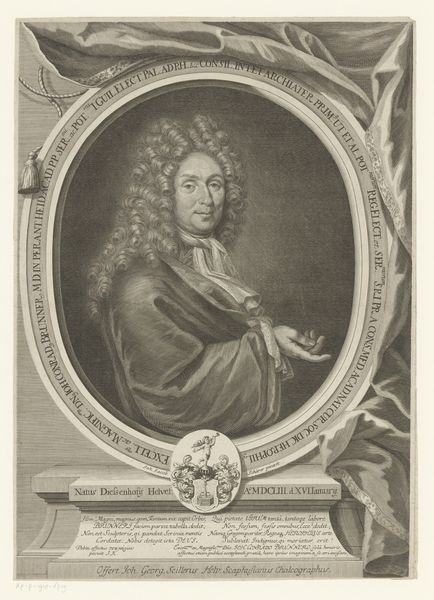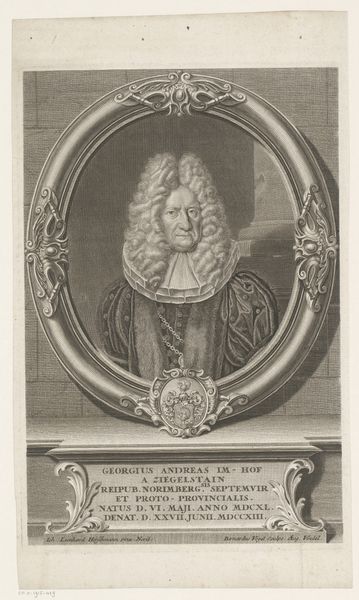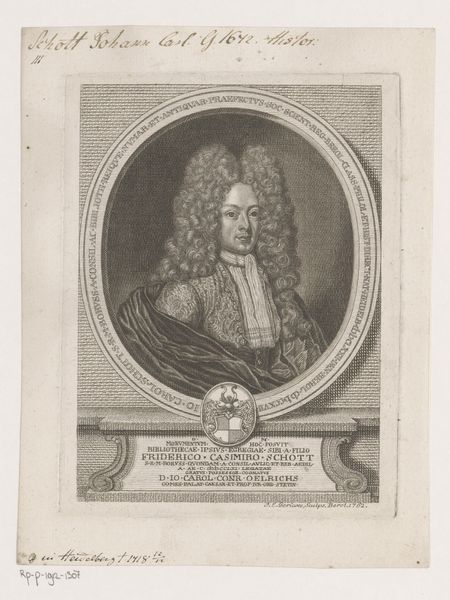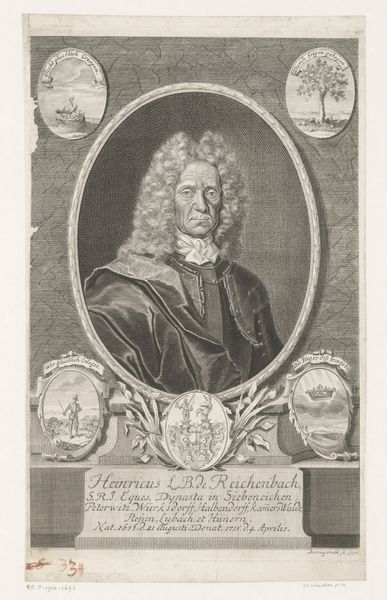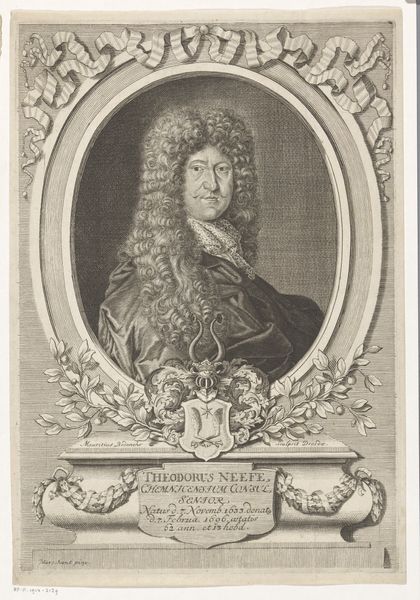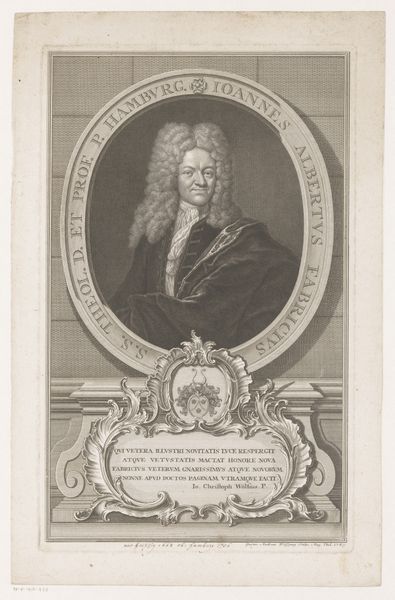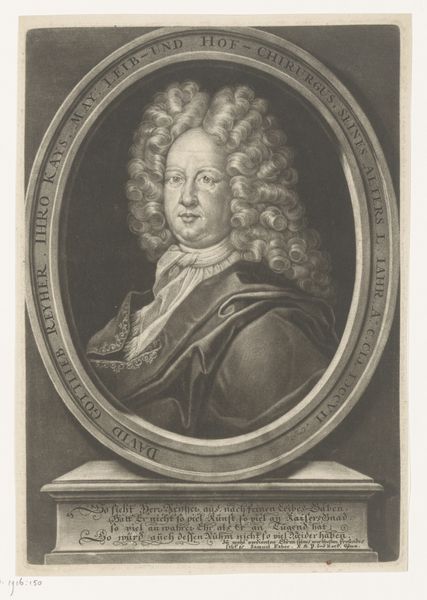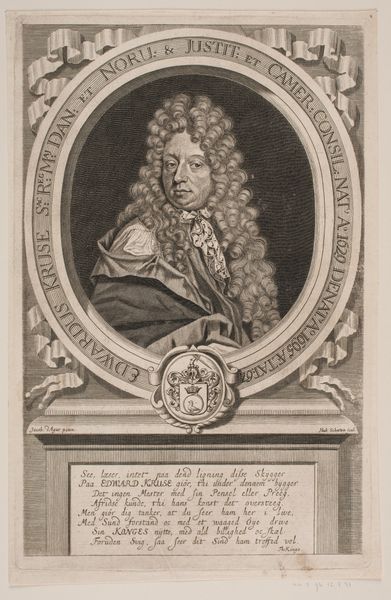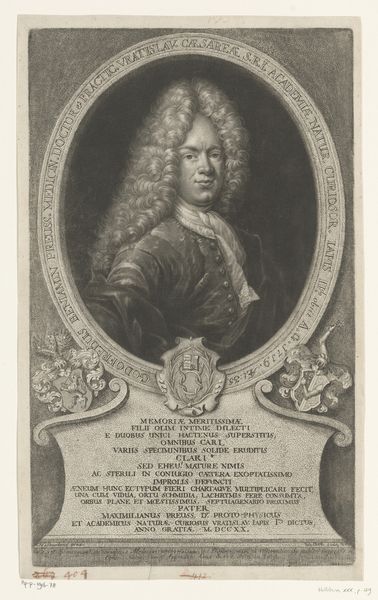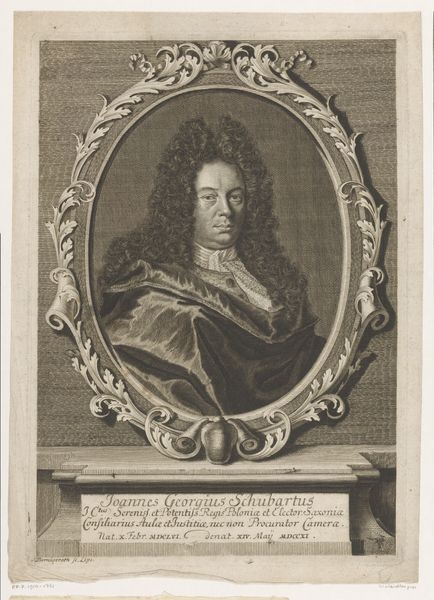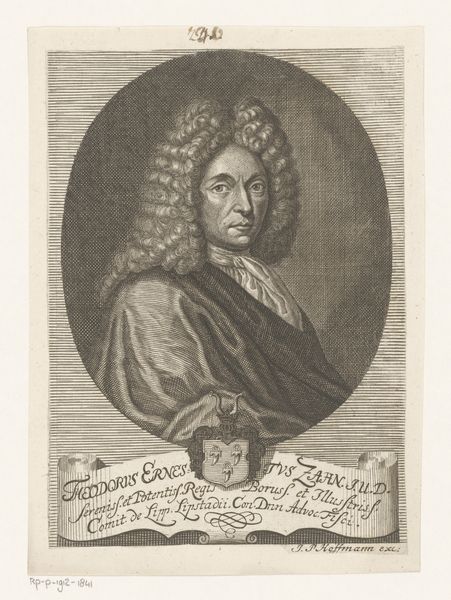
print, engraving
#
portrait
#
baroque
# print
#
caricature
#
framed image
#
traditional style
#
line
#
portrait drawing
#
engraving
Dimensions: height 293 mm, width 210 mm
Copyright: Rijks Museum: Open Domain
Johann Martin Weis created this portrait of George-Albert Steinheil using engraving, a printmaking technique dating back to the 15th century. The medium of the artwork—paper and ink—belies the complex process involved in its creation. Engraving begins with a metal plate, typically copper, into which the artist carefully carves lines using a tool called a burin. These incised lines hold the ink, which is then transferred to paper under immense pressure. Look closely, and you'll notice the crisp, precise lines and the subtle gradations of tone, achieved by varying the thickness and density of the engraved lines. The artist's skill is evident in the intricate details, from the texture of Steinheil's elaborate wig to the ornate framing elements surrounding the portrait. Engraving was a highly skilled and labor-intensive practice, often associated with commercial production. This portrait, with its attention to detail and refined technique, speaks to the artistry and craftsmanship inherent in printmaking, elevating it beyond mere reproduction.
Comments
No comments
Be the first to comment and join the conversation on the ultimate creative platform.
